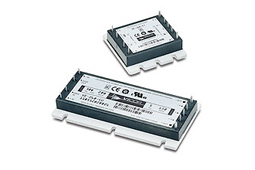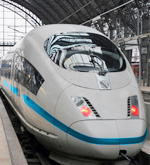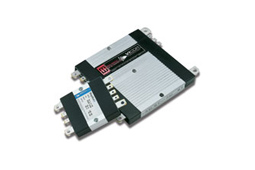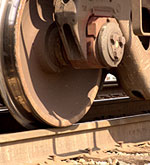Successful Applications
On-board train control and monitoring systems (TCMS) and traction systems have a major role in the design of modern trains
Train operating companies are now asking for trains that are capable of more than a simple passenger journey from one location to another. Modern „intelligent“ train control and monitoring systems play a vital role in the provision of reliable, adaptable and flexible trains necessary to provide dependable train services that meet the expectations of today’s customers. Increased utilization of intelligent on-board systems, combined with reliable high-integrity development methodologies, can provide today’s operating companies with modern systems that meet their safety, operational and maintenance needs. These intelligent systems can also be adapted to meet changing and long-term business needs.
Our customer develops and markets the most complete range of systems, equipment and service in the railway market. In particular, they are developing control and monitoring systems both for underground wagons and for trains.
Vicor’s new „V“ series (10-36 V input) VI-2 and VIJ 10-36 V products are ideal for this kind of application because they offer the wide range of input voltage required by these systems, which are supplied by the train battery at 24 Vin.
These Vicor products are electrically and mechanically rugged, and are built to high standards that tolerate the harsh environments traditionally associated with the transportation industry. They are among the smallest, high-density modules in the industry and meet industry-standard requirements and regulations, such as EN50155.
Train Safety Systems Use Vicor Modules and Configurable Power Supplies
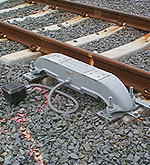
In recent times, most train accidents seem to involve vehicles and pedestrians, but fires, bomb attacks, and derailment accidents occur fairly frequently. Train collisions are less frequent, but as recently as 2009, train collisions still do occur somewhere in the world, resulting in loss of life. At least one, and as many as six, collisions occurred in each of the last ten years. Considering that safety systems ― even some that can automatically stop the train ― have been in use since the early twentieth century, it seems a little surprising that any occur. On the other hand, that the record is as good as it is may be testimony to their effectiveness.
The Vicor customer is a leading manufacturer of electronic products for railroad and mass transit applications, especially those involving safety. One class of system is cab signaling that presents track status information to the driver in the cab. Continuous cab signaling is, of course, an uninterrupted flow of information to which the driver is expected to respond. More recent cab signaling applications are computer-based systems, which can stop the train if the human operator ignores dangerous information. They also manufacture intermittent cab signaling systems and operator displays.
This customer builds its own power supplies and has a very long record using all of the Vicor modules as well as the MegaMod family, all with the common input voltage of 72 V. This company is a committed user of the Vicor Power Bench advanced power design tools to create their own custom power supplies.
The major reasons that they use Vicor products are lower development cost and low design risk, but they value the high power density, design flexibility, and fast time to market as well.
Vicor Applications Engineering Puts Power Solution on the Right Track
Just about everybody has first-hand experience making a moving thing slow down or stop – perhaps with a car, a bicycle, or a washing machine. You simply put on the brakes or shut off the power. But the process becomes much more complicated when the moving thing is a train, an aircraft, a turbine for a hydroelectric plant, or even many smaller things. The braking mechanisms come in a wide variety: air brakes, disc brakes, electromagnetic brakes, regenerative brakes, drum brakes, and, of course, anchors.
The Vicor customer manufactures industrial brakes, including friction materials, brake blocks, brake shoes, brake linings, clutch facings, to name a few. The applications for these products include automotive – cars, trucks and racing cars – nautical, hydroelectric, industrial, and agricultural.
The power application was the redesign of power supply used in a brake control system for a train. The reason for the redesign of the existing discrete was an extremely high failure rate due to thermal issues. The difficulty of manufacturing the existing design was the main reason to seek a modular solution rather than discrete solution.
They began their own redesign with a 110 V input and two outputs, 24 Vout (a VI-JT3-IW) and 5 Vout (a competitor module). Both were mounted face to face, one on top of the PCB, and one on the bottom. The Junior baseplate was glued to the chassis inside an hermetically sealed aluminum enclosure. Though the supply was exposed to vibration they did not use standoffs between the baseplate and PCB nor between chassis and PCB. A metal shielding cage was screwed only to the PCB. The total weight of the Vicor module was supported by the solder joints of the pins while the baseplate was just glued to the bottom of the box.
The customer mentioned that up to four outputs in parallel are planned for the future. Since VI-J modules are not intended to be paralleled, the Vicor recommendation was that Mini modules be used. The final design used Mini modules attached using standoffs with soldered pins.

